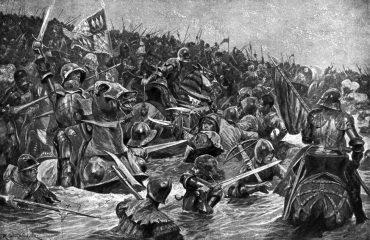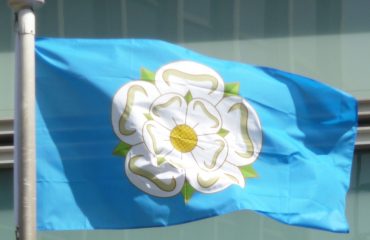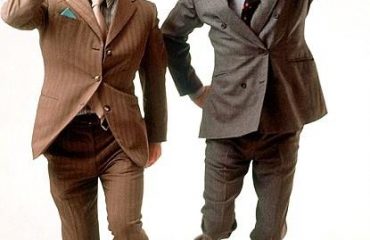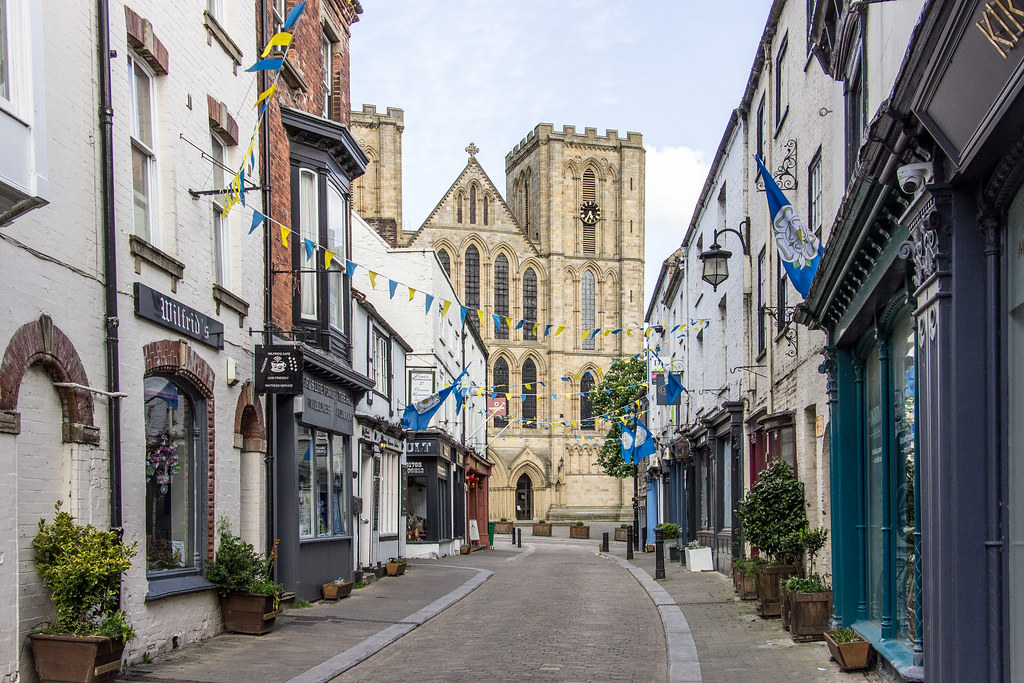
Ripon is a cathedral city, within the Borough of Harrogate. It is the smallest city in Yorkshire. Situated at the joining of two tributaries to the River Ure. The city is famous for its main feature the Ripon Cathedral, an architecturally significant religious building, its racecourse and the marketplace.
History

During prehistory the area which became Ripon was under the control of the Brigantes tribe. Evidence of their impact can still be seen today north of Ripon, at a place called Hutton Moor, is a large circular earthworks they created. The Romans never settled upon Ripon, However, they did construct a military outpost five miles away. The settlement of Ripon proper started in the 7th century, the time of the kingdom of Northumbria. The first structure built in the area, known at the time as Inhrypum, was a Christian church dedicated to Saint Peter. The settlement was built around this being created in the year 658. Its earliest settlers were stonemasons, glaziers and plasterers, brought by Wilfred ( who later became Archbishop of York) to aid in constructing the Ripon monastery. After the invasion of the Great Heathen Army the Danelaw was established and Ripon, as well as most of Yorkshire, was under Danelaw control. In 937 King Athelstan granted the privilege of sanctuary to Ripon for a mile around the church. After the death of Athelstan, King Edred had the buildings at Ripon burned in 948. However, prosperity was restored by the end of the 10th century. After the Norman conquest much of the north rebelled in 1069. This led to the Harrowing of the north, where Ripon is believed to have shrunk to a small community around the church due to the decimation. The church was soon renovated and developed a more gothic architectural style. During the 12th century Ripon built upon the booming wool trade and began to attract Italian merchants, who bought and exported large quantities of wool. After the English were forbidden from wearing foreign cloth in 1326, Ripon developed its own cloth industry. This industry took off and expanded until it was the third largest in Yorkshire at the time. Due to conflict with Scotland, Scottish invaders routinely attacked Yorkshire. This led to Ripon assigning a wakemen, almost like a mayor. The wakemen made sure the residents were safe and were home before curfew and that law and order was maintained. However Ripon itself was forced to pay 1000 marks to the Scots to prevent them from burning the village down, on one occasion.
Reformation
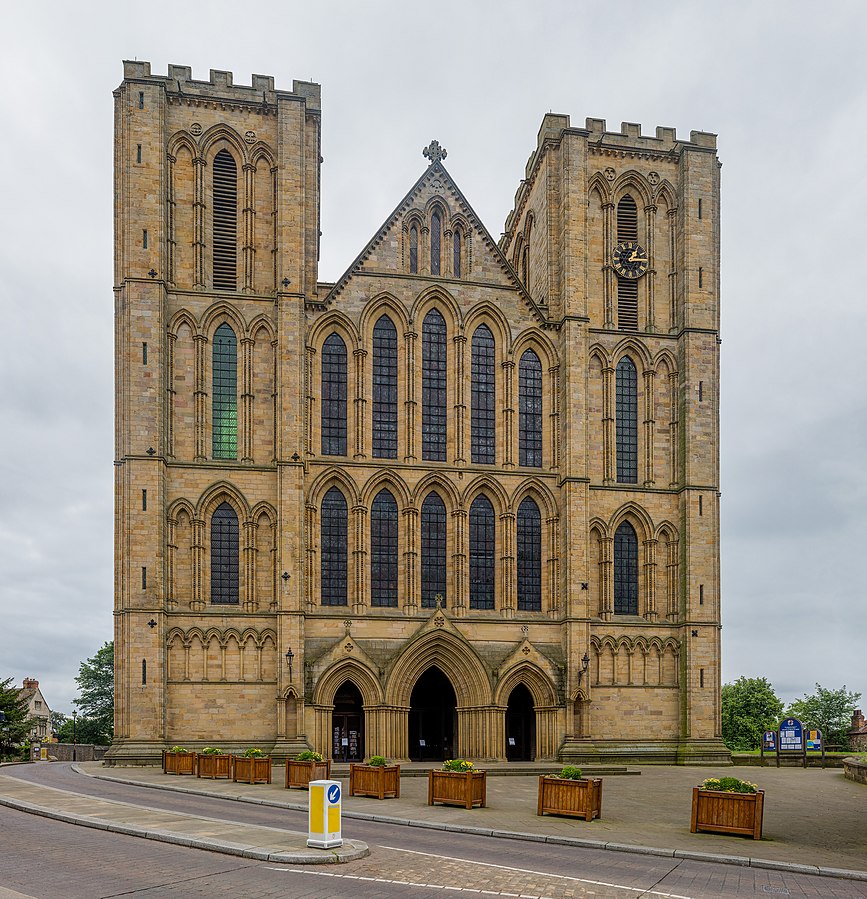
Ripon relied heavily on its religious institutions. This led to it being badly affected by the English reformation under King Henry the Eighth. The Abbot of Fountains Abbey was expelled and replaced. The Abbot then went on to become one of the leaders of the Pilgrimage of Grace. The people of the north were traditional in their beliefs and were unhappy about Henry’s intention to break with Rome. This led to the Pilgrimage of Grace however, the revolt failed and Henry followed through with the break from the Roman Catholic center of Rome and started the dissolution of the monasteries, including Fountains Abbey. After Mary Queen of Scots fled Scotland to northern England, she stayed at Ripon on her journey. The mainly catholic north supported her and there was yet another revolt known as the rising of the north. This rising too eventually failed and 600 people were executed. 300 of which were hanged at Gallows Hill in Ripon during January 1570. Ripon replaced its old textiles industry with one that focused on the manufacture of spurs. During the 16th century Ripon’s spurs became so well known that they gave rise to the proverb “as true steel as Ripon Rowels”. Spurs at the time were not just functional for use as riding accessories, but they were also used as a fashion statement and an expensive pair was crafted specially for King James the First when he stayed at Ripon in 1617. Although Ripon was not in the main line of fighting during the English Civil War, which was further to the east. Ripon remained loyal and royalist during the war. There was an incident in 1643 where Parliamentarian forces entered Ripon and damaged the minister but the Royalist forces soon settled the incident after a skirmish in the marketplace. The royalists were eventually defeated and Charles the First spent two nights as a prisoner in Ripon.
Modern Ripon
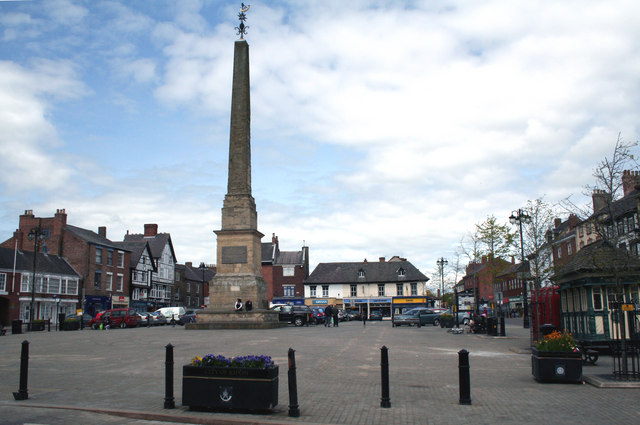
Ripon expanded and connections to it improved with the construction of Ripon railway station in May 1848. Improving tourist and logistical links. The station has since closed. During the first world war a large military training camp was built in Ripon, the local community was well known for offering hospitality to the soldiers families, and even extending help and friendship to the Flemish refugees that settled within the community. Ripon racecourse also served as an airfield for the Royal Flying Corps and then was utilized as a demobilization center for troops returning from France well into 1919. The town had a smaller role during the second world war. However, its capacity was similar and the Royal Engineers were presented with the freedom of the city in 1947. Since the war Ripon has gone through substantial remodelling and has grown in size. Its culture and history has pushed its draw to attract more tourists. Thousands of tourists each year come to Ripon to see the famous Christian architecture, the racecourse and even the theme park of light water valley.

